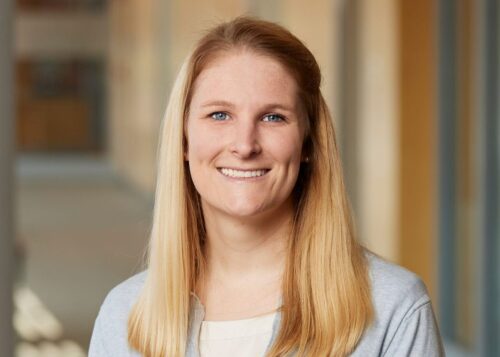Boston Medical Center Psychiatrists Innovate to Treat Teenagers With Marijuana-Induced Psychosis
May 4, 2023

Getty Images
Cannabis has gotten more potent in the last 20 years, leading to new trends in children’s mental wellness.
Children’s mental health is a nuanced, complex field that has only become more essential to appropriately and effectively address since the onset of the global COVID-19 pandemic. Boston Medical Center’s committed response to caring for pediatric mental health is made possible through a generous $3 million grant from the Yawkey Foundation. The Yawkey Foundation funding supports BMC’s strategic co-location and expansion of its Child & Adolescent Psychiatry program, creating an accessible single-stop location for quality medical and behavioral pediatric and family care. This article is just one example of the dedicated work the Child & Adolescent Psychiatry program is doing to innovate care for, educate, and build trust with its family of patients.
When teenagers smoked marijuana back in 1995, the amount of THC, or active ingredient in the drug, was about 4%. But times have changed. With new methods of testing, growing, and regulating marijuana, teens now have access to cannabis with increasingly higher levels of THC. One study found that in 2017 the average potency of marijuana had increased to 17%. This increased potency, plus easier access to many forms of marijuana in recent years, has some dedicated healthcare professionals working to address the possible mental health effects marijuana use may be having on young users, including the risk for psychosis.
“This is something that we are seeing in our emergency room,” says Natalija Bogdanovic, MD, director of Outpatient Psychiatry at Boston Medical Center. “The connection between smoking marijuana and psychosis has been there for a long time, but we’re becoming more aware of how important it is.”
To learn more about marijuana, the risk of psychosis in teens, and to give insights into how to best care for those children — HealthCity spoke to Bogdanovic and Christine Crawford, MD, MPH, an adult and child psychiatrist who works with the Wellness and Recovery After Psychosis (WRAP) Program to offer services for patients with psychotic symptoms.
HealthCity: What exactly is drug-induced psychosis and how does it present in children and adolescents?
Natalija Bogdanovic, MD: Drug-induced psychosis is when a medication or substance — in this case marijuana — causes someone to lose touch with reality. Loved ones and other third-party observers might notice the individual become more disorganized in their behavior, saying or doing bizarre things that are out of character. They can also experience significant paranoia or have disturbances, such as hearing voices other people can’t hear or visual hallucinations. These symptoms may emerge right after using marijuana and can persist for days afterward, which is an acute psychiatric concern that warrants immediate intervention.
It’s not a dose-dependent situation, where you have to use it 20 times to become psychotic. Drug-induced psychosis can occur in people who have brains that are vulnerable to becoming psychotic, and the marijuana unmasks that.
“Marijuana is not the only cause of psychosis, but it may be a preventable cause. And that’s why there’s such an emphasis on intervening to help our patients and others.”
Christine Crawford, MD, MPH: Some teens may not be as visibly psychotic but may become more socially withdrawn. They may spend more time in their room or not attend school, and they may be less emotionally reactive, kind of “flat.” We often see significant impairment in their ability to function, get through the day, and do well socially and academically — all of that together is psychosis.
HC: Who is at risk for drug-induced psychosis?
NB: Sometimes, kids use marijuana and lose touch with reality for a very brief period of time. And for some kids, once they stop using the substance, they never have another episode. But some kids can develop schizophrenia, a lifelong condition — and that’s what we as psychiatrists are really concerned about. The key is that we can’t tell who is going to be affected in this way until it happens.
Marijuana is not the only cause of psychosis, but it may be a preventable cause. And that’s why there’s such an emphasis on intervening to help our patients and others.
HC: Why is psychosis becoming more prevalent in teens who use marijuana?
NB: When you use marijuana while the brain is still developing — up until about age 25 — the consequences are greater. Also, some of the more prevalence has to do with how potent the active substances are today. Marijuana is available in so many forms, like gummies and dab pens, that are less detectable to other people than other methods of ingesting marijuana because they do not have a distinctive odor.
HC: How can clinicians work with parents, families, and caregivers to help a teen who is having a psychotic episode?
CC: Seek help right away. However, it’s so crucial to note that we’ve also seen that calling for help can lead to safety issues for some of our Black and Brown kids. A teen’s behavior during an acute psychotic episode may be met with a different response by the police or others depending on the color of their skin.
We instruct parents and caregivers to identify the issue when calling 911 by saying, “I am calling about an acute mental health concern.” And then to meet the police right at the door and reiterate that it’s an acute mental health concern. Unfortunately, as we know from the media, even when that message is communicated, there may still be a negative, or even fatal, response in some situations.
We also recommend calling 988 (the Suicide and Crisis Lifeline) as an alternative to 911. Calling this number allows you to talk to someone who has training in mental health and can help mitigate that potentially negative response when the ambulance or police arrive at the home.
HC: How do you talk with kids who have had a psychotic event about their marijuana use?
CC: The teens we see in the WRAP program will tell us that everyone is smoking and not everyone is psychotic, they want to fit in with their friends, so they don’t see the problem. So it’s hard. But I tell them it’s like having an allergy. For example, a lot of people can eat peanuts with no problem. But some people can’t eat one peanut without needing lifesaving treatment in the emergency room. That’s how it is for people who use marijuana and experience symptoms of psychosis: ongoing use is going to be detrimental for their mental health. It’s so important to tell teens, “Even though your friends can use marijuana without severe consequences, the way your brain is connected makes that impossible.”
“We see better results when family members are involved. So, our family therapist helps support networks understand psychosis and provides them with tools and strategies for how they can better support their child or person they care for on the journey toward recovery from their psychosis.”
HC: How does the WRAP program address drug-induced psychosis in teens?
CC: We know that when kids are involved in a program that provides intense intervention — not only with medication management, but also with individual therapy, group therapy, family therapy, and access to a peer specialist — we see better results. At WRAP, we work together to reduce the severity of symptoms, and hopefully, mitigate future episodes of psychosis.
We see better results when family members are involved. So, our family therapist helps support networks understand psychosis and provides them with tools and strategies for how they can better support their child or person they care for on the journey toward recovery from their psychosis.
We also have an extension of WRAP, WRAP Without Walls, for kids whose behavior is so disorganized that family members can’t get them to the clinic. We go into their home to provide intense support until they can start attending their appointments in the hospital and get back to their regular lives.
HC: Have you had a lot of success with these treatments?
CC: Yes, we have seen success. And as clinicians, it’s important for us to carry hope for these kids when they don’t see an alternative path. They see that marijuana provides them with some kind of relief and a sense of belonging, despite the consequences. It isn’t something we can just address overnight because we are dealing with the mind and emotions, so it does take time. But we must keep reminding these kids that there are other possibilities for them — and that we can see the possibility for them, even if they can’t see it for themselves.


